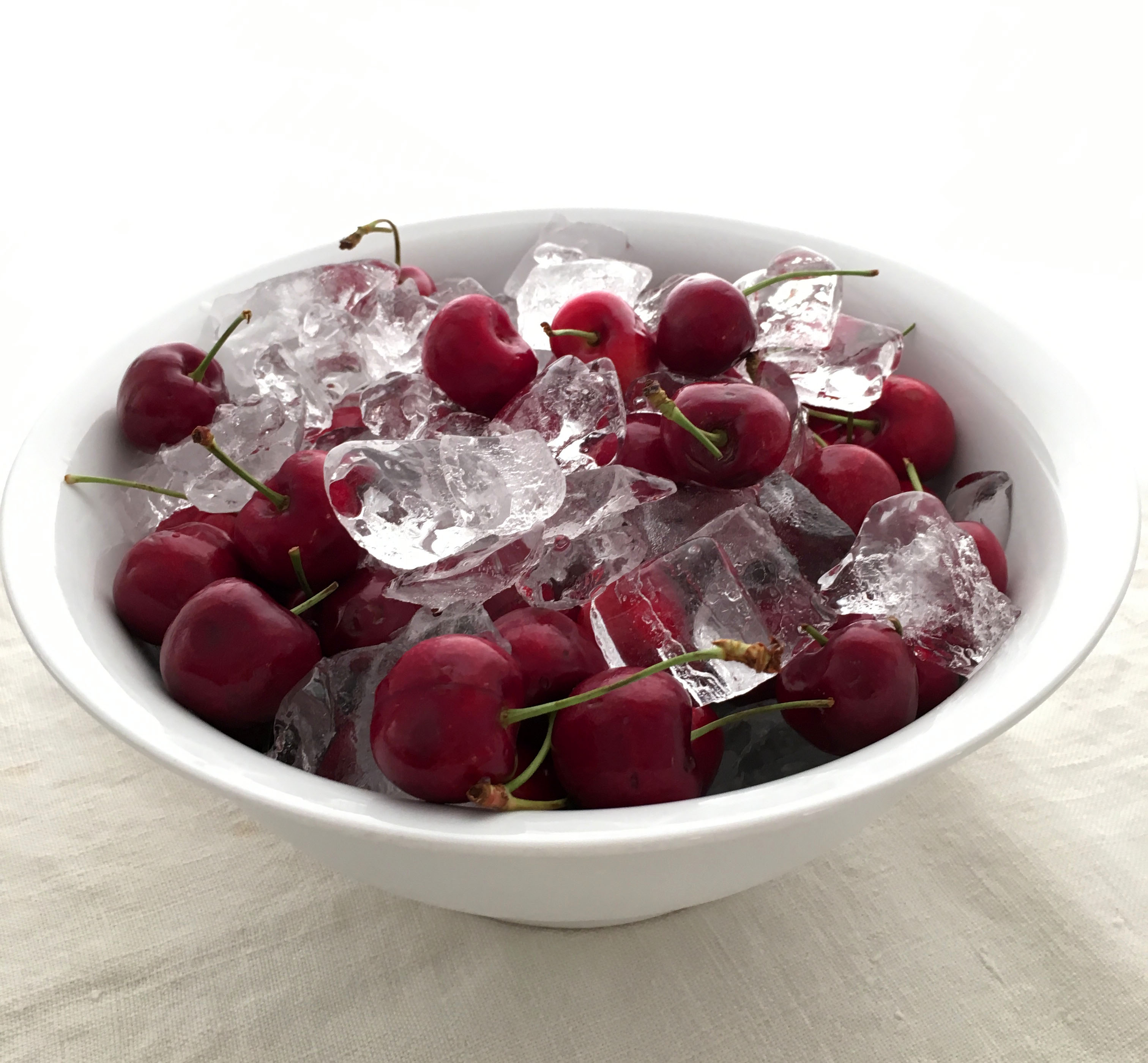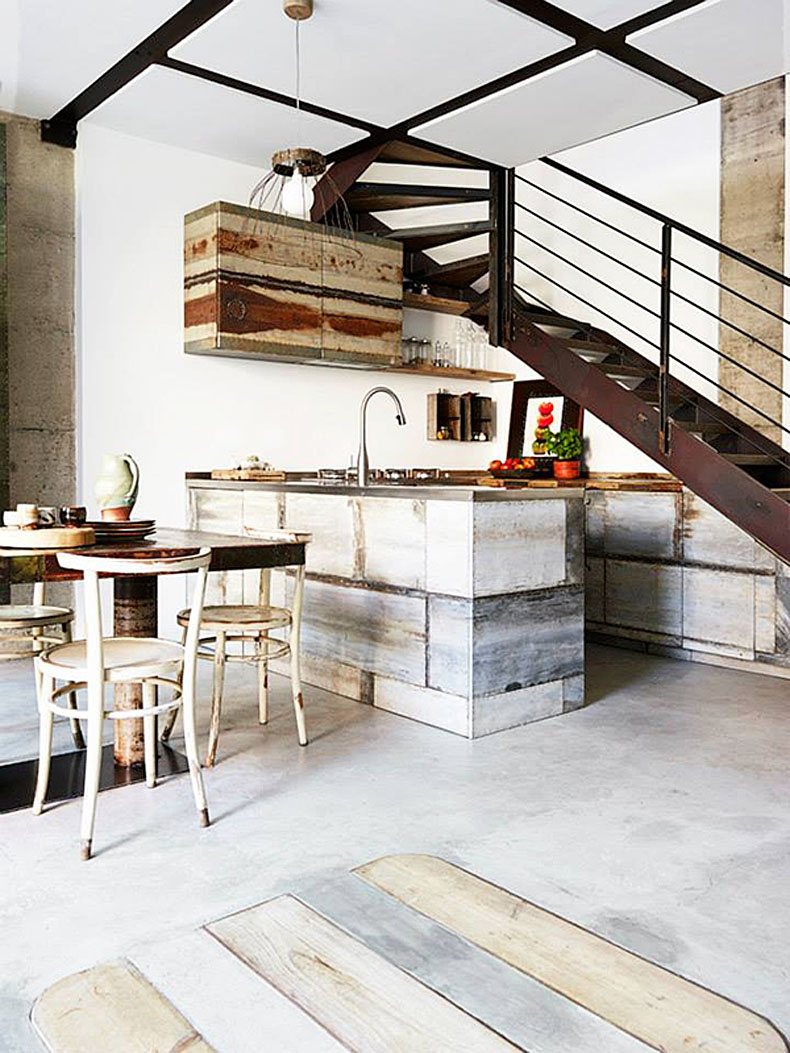When in a weakened state from anxiety, an impending cold or working too hard, I take solace in butter. I stand at the kitchen counter and eat shavings of cold butter on toast, or even crackers, with a few grains of sea salt. Good butter is like a perfect cheese to me but better at these moments: purer, simpler, direct and voluptuous.
The quality of the butter is critical. My bottom line is Vermont Butter and Cheese Company’s Cultured Butter which is reliably fresh, or French or Irish butter from a store with a good turnover. Mass-produced stick butter like Land O’Lakes -even unsalted -won’t take me where I need to go, unless I’m in a serious bind. One day when I couldn’t find good butter, I decided to make butter myself, to see if I could duplicate its sweet, creamy, slightly fermented flavor and bright bursts of crunchy fleur de sel salt.
I mixed creme fraiche (a thick cultured cream) and heavy cream to get that cultured ferment taste, then kneaded in flaky Maldon sea salt when it was chilled. It is an urban persons version of a great butter, far better than just about anything I can buy easily, or any drug.
Although you can make satisfying butter with vin ordinaire non-ultrapasteurized cream, the impact increases proportionally to the quality of the cream you use: fresh bio-dynamic or organic cream from a farmer’s market, for example, will blow the roof off.
>>Using half crème fraiche is my cheater’s way of getting a really rich, cultured taste. If you can’t find crème fraiche or want to reduce your costs, culture the cream yourself by mixing some yogurt or buttermilk with active cultures into the cream, figuring one tablespoon per cup of cream, and leaving it uncovered on the counter for 16 to 24 hours until thick. Don’t try making butter on a warm summer day or in a hot room. A cool atmosphere is essential to its texture.
(To really understand butter -making, check out Milk, The Surprising Story of Milk Through the Ages by Anne Mendelson. The blog What Geek’s Eat has detailed instructions of butter making with photos.)
Recipe: Homemade Butter
This recipe seems involved but isn’t. It takes no time and the butter you get will be a revelation. Over the years I’ve streamlined the method. By striking through the steps I consider extraneous, I show just how many liberties you can take, far more than most butter recipes will admit.
A byproduct of butter-making is buttermilk. This is totally different than the commercial stuff and is truly delicious. Refrigerate to use on fresh berries, in cucumber soup, in buttermilk biscuits, cornbread or quick breads and cakes.
The recipe can be scaled up indefinitely and will work just fine with a food process or electric mixer.
Makes 2/3 to 1 cup butter plus 1 cup buttermilk
2 cups (1 pint) heavy whipping cream OR 1 cup (1/2 pint) heavy cream (not ultrapasteurized) mixed with
1 cup (1/2 pint) crème fraiche
About ¼ teaspoon of a pebbly-or-flaky-yet-chewable sea salt, such as fleur de sel or Malden, or to taste (optional)
Place the food processor bowl and blade, along with the heavy cream crème fraiche and in the freezer to chill about 15 minutes. Add the cream to the food process and turn it on. Let it run, stopping to check the consistency occasionally and scrape down the sides of the bowl, until the mixture has “broken” and looks like grainy yellow curds in milky buttermilk (whey). It will seem to take forever, but after 4 or 5 minutes the mixture will go from looking whipped to forming a big clump briefly on the side of the bowl to smoothing into butter sitting into a pool of buttermilk. Pour into a strainer placed over a bowl to catch the buttermilk.
Fill a medium bowl with ice water (water with ice cubes), scoop the butter into a ball and plop it in the water. Place the strainer with the butter under a stream of cold tap water. Working quickly, knead and rinse the butter to remove of all traces of buttermilk, straining off and replacing the water occasionally, until it remains clear. Pour off the water, Turn off the water, knead the butter a few more times to squeeze out any remaining water, and pat dry with paper towels. Place on a dinner plate, flatten about ½ inch thick and chill in the freezer 15 minutes.
For salted butter, sprinkle salt evenly over the chilled butter and use a dinner knife to mash and fold it into the butter until thoroughly combined, occasionally pinching off bits to taste the salt/crunch level, adding more if necessary. Work quickly so the butter doesn’t warm up. Wrap the butter in plastic wrap or seal in a plastic container and refrigerate.





My 9 yr old granddaughter learned to make butter at French-American School. She showed me: she poured heavy (whipping) cream into a small thin jar (an old spice jar I had) and just shook it a lot. It was delicious but turned sour in a few days. Maybe we needed to add salt.
What a great cooking lesson for a kid. Homemade butter is more volatile than commercial butter, and is best eaten within a few days, or frozen. (Though it’s possible your cream was on the verge.) A little salt definitely would have staved going sour. Using cultured cream also helps its longevity. My friend Josh always puts his butter, first wrapped in paper, then in a sealed plastic container, to keep it from absorbing off odors. It always tastes really sweet and fresh.
Betty had some bitter butter
She wanted to make her bitter butter better
So she thought she would get some better butter and mixed it with her bitter butter.
But instead of Betty’s butter getting better her bitter butter made her better butter bitter.
We are going to try this today. If it takes 4-5 minutes with a food processor, how long would it take a child to shake a jar?
Serendipity! I was just watching a video on homemade butter, using a standing mixer, and wondering , Okay, but how do you get the same effect as the cultured European stuff? You’ve answered my question. One observation from the video–made by Alana Chernila, author of THE HOMEMADE PANTRY–is that after you’ve squeezed as much moisture out of your new butter as possible, it’s necessary to “wash it,” i.e. rinse it completely under running water to remove any remaining liquid whey. Otherwise, according to Chernila, it will sour within a few days. Ken
Butter be good. Butter look out. Butter safe than sorry. Butter you than me.